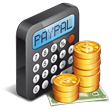The Mac App Store – Apple vs. Developers
Thursday, October 21st, 2010Since Apple announced the Mac App Store yesterday, there’s already been a lot of controversy. Here is how the announcement looks from our perspective of a small software vendor, who has shipped software for the Mac for more than a decade:
Round 1: It’s a monopoly
Since this will be the only portal for purchasing apps that comes pre-installed with your Mac, Apple has a def-facto monopoly over the distribution channel. It will be the place where the majority of users will look for an app first. As developer you cannot afford to ignore it. Otherwise your competitor will eat your lunch. If you want to stay in the business you have no other realistic option as to play by Apple’s rules.
Apple wins. (Apple: 1, Developer: 0)
Round 2: Apple’s fees
Apple takes a 30% cut from an app’s sales price. That’s a much higher than the 6-8% usually charged by software payment providers as Kagi, eSellerate, or FastSpring. And much, much higher than the ~3% you are paying when dealing with credit card companies directly, as some software vendors do.
What do you get for the premium Apple charges, except the exposure in their App Store, that you won’t get from the established payment providers? Almost nothing, as digital downloads or licensing mechanisms are offered by the established providers for free or a tiny surcharge.
Apple wins. Developer receives even score. (Apple: 2, Developer: +1 for exposure, -1 for fees)
Round 3: Loss of Customer Relationship
Apple does not disclose the customer information to the software vendor, making it difficult to identify existing customers. When the developer wants to release paid upgrade for its software, he is facing a dilemma: Apple does not offer a way for distributing paid upgrades and there’s no way to contact customers directly. How to resolve this? There seems to be no other way than releasing a new version of your application as separated product in the AppStore at the same price for everyone. Existing customers will be reluctant to purchase the new version, as they already paid in full. And I can’t blame them for that.
Developer loses. (Apple: 2, Developer: -1)
Round 4: Piracy
Since all apps are secured by the same copy-protection theme, I’m certain generic cracks will be available shortly after the release of the App Store. These cracks will unlock any app purchased from the App Store, so it can be distributed freely. And since the Mac is still an open platform, there is no jail-breaking required. The initial barrier of installing such a cracking toolkit will therefore be a lot lower than on iOS. And because prices in the Mac App Store will be a lot higher than on iOS, the temptation is a lot higher, too.
Developer loses. (Apple: 2, Developer: -2)
Round 5: Additional development and support cost
Most developers will offer two versions of their products: The one offered on the developer’s website including a built-in demo mode, which can be bought outside the AppStore for a reasonable processing fee, and the one in the App Store. Since Apple’s approval guidelines prevents developers from using anything else than the App Store itself for updating products purchased trough it, you have to implement two separate update mechanisms. You also have to explain to customers, why they can’t use the latest version from your website until Apple has approved the new version in the AppStore, too – if they approve at all.
Developer loses. (Apple: 2, Developer: -3)
Round 6: Approval process
In our experience, getting a new release of an iPhone app approved by Apple takes about a week. I doubt that this time span will shorten for Mac apps, since most Mac applications tend to be more complex than iOS applications.
If you do ship software, which companies run their businesses on, like us, you cannot afford a single day of downtime because of a broken feature. Software updates need to be in the hands of customers quickly, especially if you need to keep up with changes beyond your control, as we have to do with eBay’s constantly changing system. In the end, the customer doesn’t care why he is not receiving a critical update in time – he will cast the blame on you.
Developer loses. (Apple: 2, Developer: -4)
Wrapping up
The App Store might pay off for new developers, who don’t have an established business yet and develope a general purpose app or game selling for around USD 10.00. They are freed from building the infrastructure for distributing and selling their apps. I’m sure there will be a few early instant hits in that area – so it might be worth accelerating your development if you fall into it.
If you have an well-established app targeted at a small niche, live will become harder. You probably won’t see an increase in sales that compensates for Apple’s premium fees, as people in your niche are already well aware of your product.
After all our outlook is not very positive. If you see things differently, please let us know in the comments.










